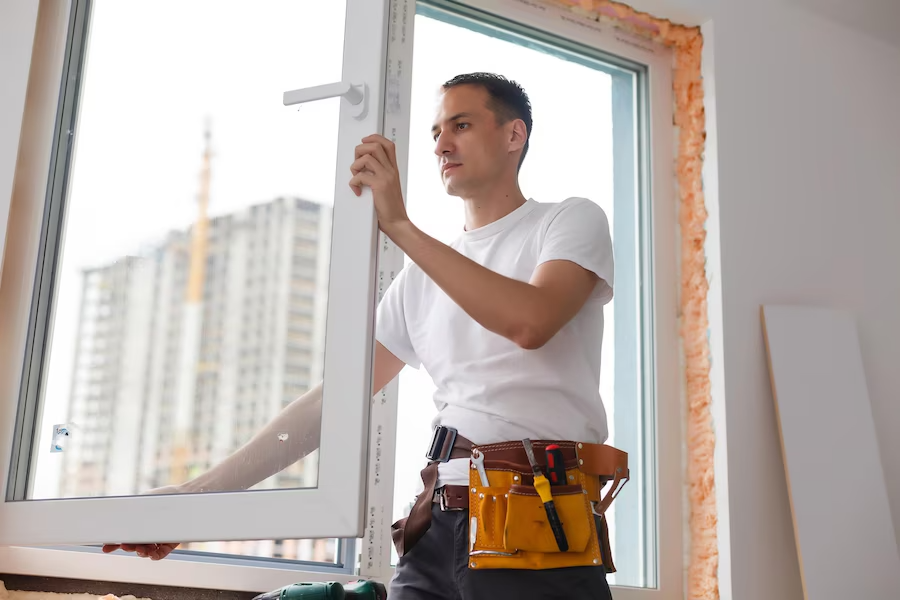Factors That Impact Window Replacement Costs
Replacing windows can significantly enhance both the aesthetic appeal and energy efficiency of your home. However, the cost of window replacement can vary widely depending on several key factors. Understanding these factors can help you make informed decisions and manage your budget effectively. Firstly, the type and size of windows you choose play a crucial role in determining the overall cost. Larger or more uniquely shaped windows often require more materials and labor, thereby increasing expenses. Additionally, the materials themselves—whether you opt for economical vinyl, durable aluminum, or classic wood—will influence the cost. Furthermore, the complexity of the installation process, including any necessary structural modifications or repairs, can also add to the total expense. By considering these factors in detail, you can better anticipate the costs associated with replacing your windows and ensure a successful and cost-effective home improvement project.
Geographical Factors and Window Replacement Costs
When considering a window replacement project, many homeowners focus on factors like window types, materials, and energy efficiency ratings. However, one often overlooked aspect that significantly impacts the overall cost is geographical location. Where you live can influence everything from labor rates to the specific building codes that affect window installations. In this article, we’ll explore eight key geographical factors that can affect window replacement costs.

Regional Labor Rates
Labor costs vary widely across different regions. Urban areas or regions with higher costs of living typically have higher labor rates. This is important to consider because labor costs often constitute a significant portion of the total window replacement expense. Understanding the average rates in your area can help you budget more effectively for your project.
Climate Considerations
Climate plays a crucial role in determining the type of windows needed for optimal energy efficiency and durability. In regions with extreme temperatures or severe weather conditions, windows may need to meet higher standards for insulation and impact resistance. This can lead to higher costs for purchasing windows with specific energy-efficient features or durable materials.
Building Codes and Regulations
Each region has its own set of building codes and regulations that govern window installations. These codes ensure that installations meet safety standards and energy efficiency requirements. Compliance with these regulations may require specific types of windows or additional features such as tempered glass in certain areas. Non-compliance can result in fines or the need to redo the installation, adding unforeseen costs to your project.
Supply and Demand Dynamics
Supply and demand dynamics can vary significantly by region, affecting the availability and pricing of window materials and products. In some areas where demand for window replacements is high, prices may be inflated due to limited supply or increased competition among contractors. Conversely, in less densely populated regions, prices may be lower due to reduced demand and lower overhead costs for contractors.
Access to Suppliers and Contractors
Accessibility to window suppliers and contractors can also impact costs. Rural or remote areas may have limited access to suppliers, resulting in higher transportation costs for materials. Additionally, fewer available contractors may lead to higher labor rates or longer wait times for scheduling installations. Conversely, urban areas with more suppliers and contractors may offer competitive pricing and faster turnaround times.
Financial Considerations: Budgeting for Window Replacement
Replacing windows in your home is not just a significant investment in aesthetics and comfort but also a decision that requires careful financial planning. Understanding the various costs involved and how to budget effectively can help ensure a smooth and successful window replacement project. In this article, we’ll explore eight key financial considerations to keep in mind when budgeting for window replacement.
Initial Cost Estimation
The first step in budgeting for window replacement is to estimate the total cost of the project. This includes the cost of the windows themselves, labor for installation, disposal of old windows, and any additional materials or services required (such as trim work or repairs to the window frame). Researching average costs in your area and obtaining multiple quotes from reputable contractors can provide a clearer picture of what to expect financially.
Types of Windows and Materials
The type of windows you choose and the materials they are made from will significantly impact the overall cost. Common window materials include vinyl, wood, aluminum, fiberglass, and composite materials. Each material has its own price range, with factors such as durability, energy efficiency, and maintenance requirements influencing costs. Higher-quality materials may have a higher upfront cost but can offer long-term savings through improved energy efficiency and reduced maintenance.
Energy Efficiency Considerations
Energy-efficient windows can help lower heating and cooling costs over time, but they often come with a higher initial price tag. When budgeting, consider the energy efficiency ratings of different window options, such as ENERGY STAR® ratings, U-factor, and Solar Heat Gain Coefficient (SHGC). Calculate potential energy savings over the life of the windows to determine if the higher upfront cost is justified by long-term benefits.
Installation Costs
The cost of installation can vary based on factors such as labor rates in your area, the complexity of the installation (e.g., replacing specialty windows or installing windows on upper floors), and whether additional structural work is required. It’s crucial to budget not only for the installation itself but also for any unforeseen challenges that may arise during the process.
Hidden Costs and Additional Expenses
In addition to the basic costs of windows and installation, there may be hidden costs to consider. These can include fees for permits or inspections, disposal fees for old windows, and the cost of any unexpected repairs or upgrades needed once the project begins. Budgeting a contingency fund of around 10% of the total project cost can help cover these unforeseen expenses.
The Influence of Window Frame Materials on Replacement Costs important
When planning a window replacement project, one of the critical decisions homeowners face is choosing the right frame material. Each material option comes with its own set of characteristics that can influence not only the aesthetics and durability of the windows but also the overall replacement costs. In this article, we’ll explore the influence of window frame materials on replacement costs and highlight key points to consider.
- Cost Variability: Window frame materials such as vinyl, wood, aluminum, fiberglass, and composite vary widely in cost. Vinyl frames are typically the most affordable, while wood and fiberglass tend to be more expensive due to their durability and aesthetic appeal.
- Maintenance Requirements: Different materials have different maintenance needs. Vinyl frames are low maintenance and resistant to moisture, whereas wood frames require more upkeep to prevent rot and deterioration.
- Energy Efficiency: The energy efficiency of window frames can impact long-term utility bills. Materials like fiberglass and vinyl offer better insulation properties than aluminum, making them more energy-efficient choices.
- Durability and Lifespan: The longevity of window frames varies by material. Vinyl and fiberglass frames are known for their durability and resistance to warping and cracking, while wood frames can be susceptible to weather damage over time.
Conclusion
Understanding the factors influencing window replacement costs is crucial for homeowners looking to upgrade their windows. Factors such as window size, material quality, installation complexity, and additional features significantly impact overall expenses. Opting for energy-efficient materials like double or triple-pane windows may initially seem pricier but can yield substantial long-term savings on energy bills. Similarly, choosing reputable contractors who offer quality installations can ensure durability and efficiency, ultimately enhancing the value and comfort of your home.
For expert advice tailored to your specific needs in Beachwood, Ohio, EZ Window Solutions stands ready to assist. Our dedicated team is committed to delivering top-notch service, from initial consultation to flawless installation, ensuring your satisfaction every step of the way. Contact us today at +1 (216) 230-5483 to schedule a consultation or visit our website to learn more about our services and how we can help you achieve your window replacement goals seamlessly.


Write a Comment